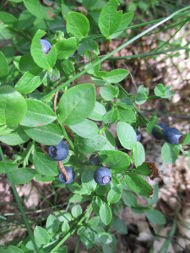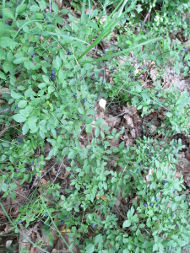








Bilberry; Whortleberry; European Blueberry (Vaccinium myrtillus), fam. Vacciniaceae or Ericaceae.
A small evergreen shrub, forming quite thick soil-covering growth in some shady areas of the forest. It blooms in late April, the fruits ripening in mass in the second half of June. Indeed, they can be gathered in rather large quantities, though the process is very time-consuming. Nevertheless, they are very beneficial, and the quality of fresh, self-picked berries is anyway higher than of those purchased in the market, which always contain some damaged, starting to spoil berries (due to the gathering technique by scraping with combs). The bilberries have antiseptic, astringent, antiinflammatory action, lower blood sugar, increase stomach acidity and promote digestion, metabolism and vision acuity. Similar properties are characteristic for the bilberry leaves as well, though they also have a special use for kidney diseases. The bilberry thickets are easily noticed in any time of the year, providing that there is no snow. So, you can start to remember their locations in winter or early spring, to avoid wasting time for their looking-for in June.